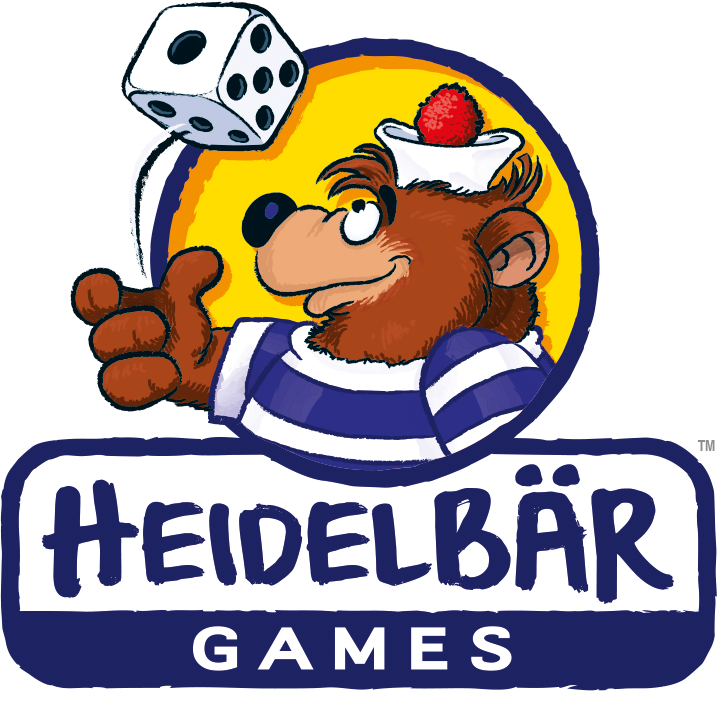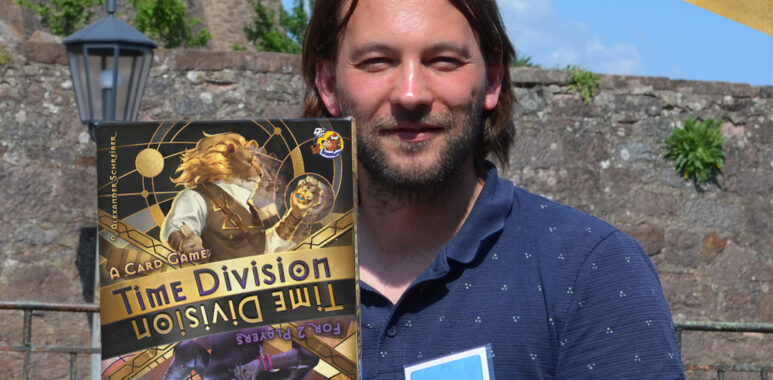
Interview: Alex Schreiber (Time Division)
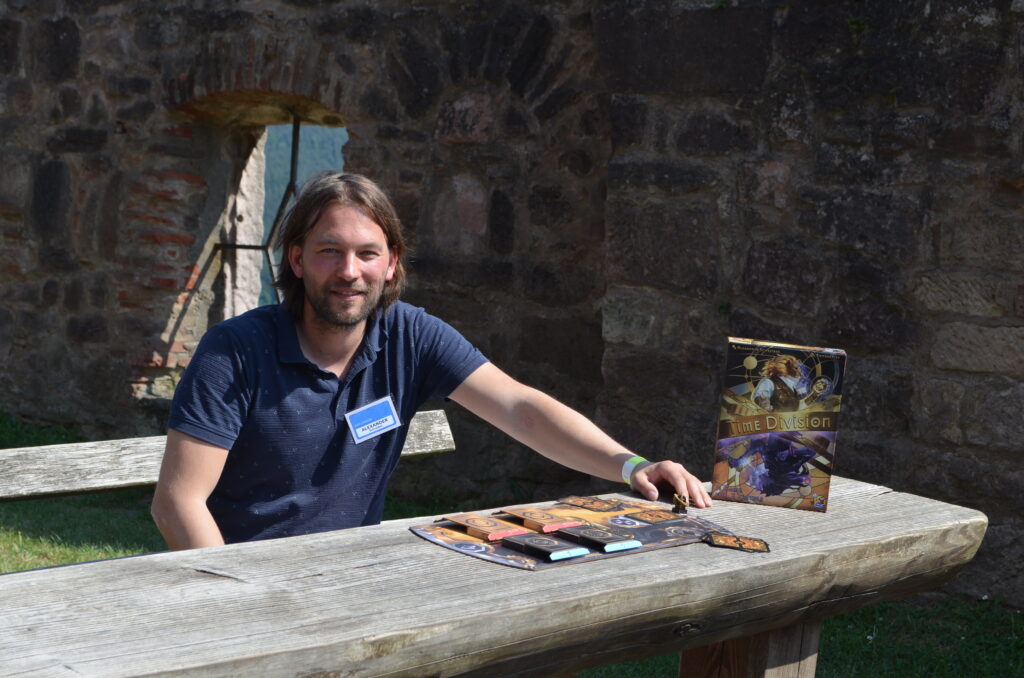 Alexander Schreiber, born in 1986 in Landstuhl, Rhineland-Palatinate, studied political science in Mainz and has since been working as a freelance tutor (mainly for mathematics) – first in Berlin and since 2020 in Weimar. By his own admission, he has too many hobbies: poetry, mathematics, hiking, football and, of course, board games. He actually developed his first games in kindergarten – though they were very conventional throw-and-run games. But an inclination for this hobby was thus already laid out early with Alex. However, this inclination became a real passion only in the late youth and since about three years he pursues this inclination with greater seriousness. The first result is the strategic card game Time Division, which will be published by HeidelBÄR Games on September 30th.
Alexander Schreiber, born in 1986 in Landstuhl, Rhineland-Palatinate, studied political science in Mainz and has since been working as a freelance tutor (mainly for mathematics) – first in Berlin and since 2020 in Weimar. By his own admission, he has too many hobbies: poetry, mathematics, hiking, football and, of course, board games. He actually developed his first games in kindergarten – though they were very conventional throw-and-run games. But an inclination for this hobby was thus already laid out early with Alex. However, this inclination became a real passion only in the late youth and since about three years he pursues this inclination with greater seriousness. The first result is the strategic card game Time Division, which will be published by HeidelBÄR Games on September 30th.
We asked Alex a few questions:
- 1. As you know, in Time Division there are three different ages in which players duel.
Do you have a favorite age or even a favorite card?
That’s almost like having to choose your favorite child 😉
Of course, I like all three ages for very different reasons, because they all play so differently. But between you and me, I can tell you that I find the Dark Ages the most interesting in terms of gameplay, because it’s so unpredictable. If you have a good sense of how the game might go in the drafting phase, you can put together a brutally strong deck. However, if you make a bad guess, it will backfire badly. Therefore, you should certainly spend a few games in Ancient Egypt to familiarize yourself with the game before venturing into this age.
- 2. Why did you choose the three ages (Egypt, Middle Ages and
80s) and were there other ages to choose from?
In fact, I originally had a different selection of ages in mind: Medieval, Roman Empire, and Renaissance. But then the publisher felt that the Roman Empire and Renaissance might not be as accessible thematically, because few players could do anything with an Aedile (Author’s note: The aediles held a lower office in the Roman Republic. They were elected for one year at a time). The publisher then thought a lot about which ages might be more suitable. And yes, there were many different ideas. In the end, the original Middle Ages set became Ancient Egypt, the Roman Empire became the Middle Ages, and the Renaissance went into the 80s. I’m also very happy with this solution, because the respective themes fit well with the gameplay of the sets: In ancient Egypt, with its relatively clear hierarchies, the gameplay is a bit clearer and not quite as surprising as in the other eras, which is why it’s the perfect entry point. In the Middle Ages, power relations were no longer quite so one-dimensional. Nominally, the king was at the top in many countries, but there were so many other players who represented a counter-power or who could evade royal rule: Nobility, clergy, cities, non-state organizations such as guilds or the Hanseatic League. It was a confusing mix, which is reflected in the wild gameplay of the set. And the 80s are often considered to have a strong hedonistic and materialistic orientation. So of course I think it’s fitting that there are some cards that can really score you a lot of points.
- 3.Are there any other expansion decks from other eras with different
gameplay mechanics planned for the future?
I have no shortage of new ideas for ages with very different gameplay. There are actually a few in my drawer – I can’t just stop working on a game when I’m enjoying it. And the game almost forces the developer to create more decks. Whether there will be expansions – that’s out of my hands. But I would wish it for the game.
- 4. Time Division is an entertaining but very strategic card game. How did you come up with the idea for the mechanisms and which mechanism came first?
This game idea had a strangely fast birth. Usually, when I develop a new game idea, it’s like this: In the beginning, I have an idea for a mechanism that I think is great at first, before I realize how many problems are associated with it. Then I try to solve all these problems and realize that there is a problem for almost every solution. That usually leads to months of mind ping-pong before the idea is ready for a test game.
The idea for both the drafting and the playing of the cards (i.e. that only one player uses his effect and the other player gets victory points) came to me – I don’t know from which part of my brain – in one go. Immediately, many of the card effects from the first set were also clear to me. I then just had to decide how to determine who gets the points and who gets to trigger the effect. The player who plays the first card? The player who plays the second card? The player with the highest card gets the points? Or the effect after all? But in deciding, I was helped by the card effects that already existed, so it took maybe five or ten minutes to decide: whoever lays the higher card gets to decide who gets points and who gets to use their effect.
- 5. How many times did you have to test the mechanisms until they were mature?
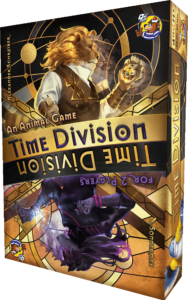
Time Division was unusually tame to me in that respect as well. The gameplay was fun right from the start. Only during the first few tests were there minor problems caused by the interaction of certain card effects. But after I fixed those, it was basically clear that the game worked that way. We still tested it many times – not at all because we felt we had to, but simply because we enjoyed it. At this point I would like to thank all my friends and family, especially my girlfriend and my best friend, who supported me so much! All in all, I ended up with a high number of test games – also because we tested several sets. However, I don’t know exactly how often we’ve tested it.
- 6. How do you approach game development in general? What drives you in the process?
It’s difficult to describe one’s own creative process, because a lot of it probably takes place in the subconscious. But what I am pretty sure of: For me, it often starts with a feeling. That can be, for example, a feeling that was foregrounded when playing a certain board game. Then I might come home from a game night with the desire to also make such a wonderfully devious game – but with a set collecting mechanism – or with bluffing elements. Or the feeling that comes when you keep an eye on the rental prices of a large German city and wonder what actually drives a real estate speculator and in what ways he thinks. Then I would like to have it on a board, maybe just to be able to understand it better. In any case, the idea for a mechanism often develops out of such a feeling and then the already described thought ping-pong begins.
- 7. Do you have role models when you think of other game designers?
I don’t think I have any role models in the sense that I would consciously orient myself on someone. But of course there are far more game designers whose work I appreciate than I can list: Donald X. Vaccarino, Elizabeth Hargrave, Stefan Feld, Richard Garfield, Hjalmar Hach, Cole Wehrle and many more.
- 8. What’s your favorite board game?
Oh, that’s a tough one. There are so many great games that I have a hard time naming my one favorite among them. I also like to play very different games. But over the years, it’s become apparent that the games I still look forward to playing when they come to the table, even after hundreds of games, play briskly and intuitively, yet demand interesting strategic decisions: Citadels, Dominion, Colt Express, 7 Wonders, Puerto Rico.
- 9. Was it difficult to find a publisher for this kind of game?
I did have contact with one or two other publishers, but after cautious interest, they turned me down quite early on. However, I must emphasize that in the board game industry, the vast majority of publishers take the time to explain their decision and you can move forward with valuable feedback even after a cancellation. Since these rejections came quite early, I quickly found my way to the Heidelbären and you showed serious interest in Time Division early on. In this case, the search for a publisher was not particularly difficult.
- 10. How did you like working with HeidelBÄR Games?
The collaboration with HeidelBÄR Games was really great, especially the exchange of ideas with Roland and later with Sabine. That was always a lot of fun for me: The developers kept coming up with completely new ideas about what directions we could go in or whether we needed more effects of a certain “flavor” – often input that hadn’t even occurred to me before. I then tried to implement these ideas,
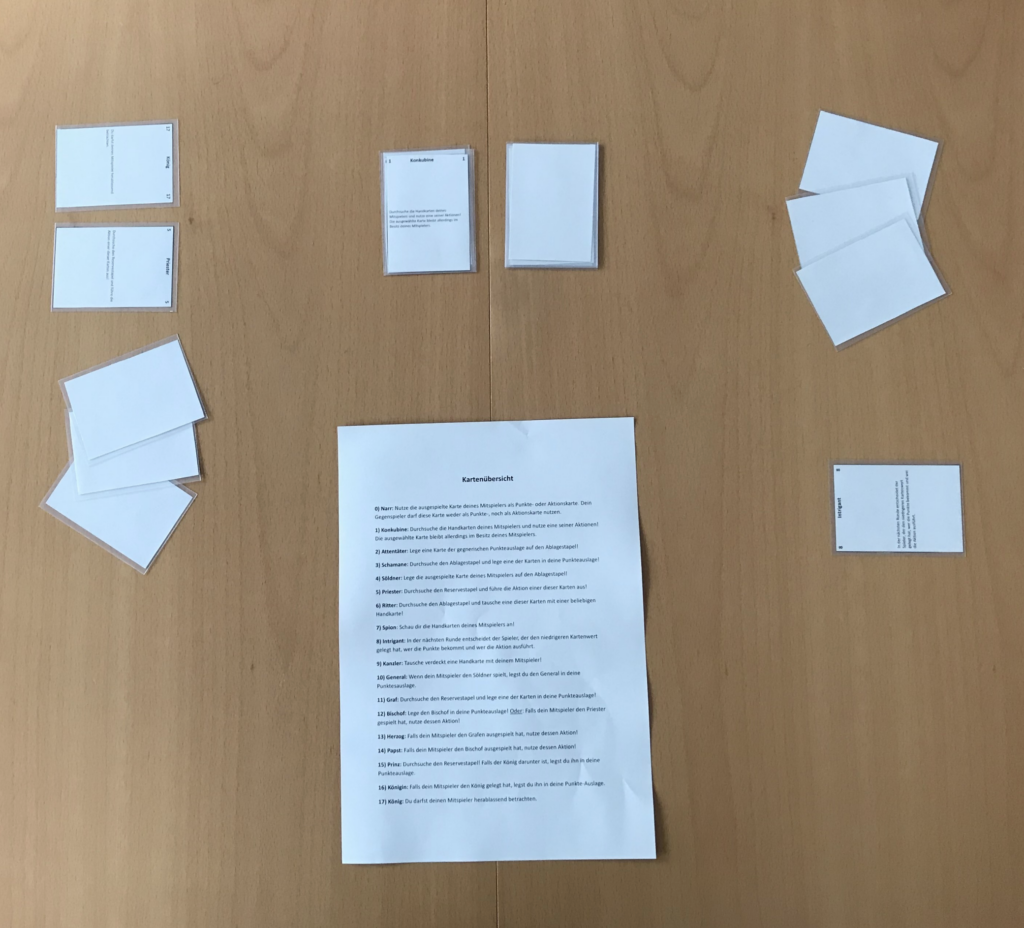 Some of them were tweaked or Roland and Sabine worked on new map effects and developed the really cool campaign mode and I tested it. So, the creative exchange was really great. But of course there are a lot more people on the team, and they all did a great job: Decisions on the material, the illustration, the symbolic language that was developed specifically for the game – it’s miles away from the white text wasteland that I was prototyping the blue bears to be (as you can see in the picture on the right). And currently the collaboration, especially with the PR department, is more intense again because of Essen. In this respect, I also feel super cared for by Micha. At this point, many thanks to the entire team.
Some of them were tweaked or Roland and Sabine worked on new map effects and developed the really cool campaign mode and I tested it. So, the creative exchange was really great. But of course there are a lot more people on the team, and they all did a great job: Decisions on the material, the illustration, the symbolic language that was developed specifically for the game – it’s miles away from the white text wasteland that I was prototyping the blue bears to be (as you can see in the picture on the right). And currently the collaboration, especially with the PR department, is more intense again because of Essen. In this respect, I also feel super cared for by Micha. At this point, many thanks to the entire team.
- 11. How satisfied are you with the visual design of the game?
When I first saw the cards, I immediately fell in love with the design. It looks far better than I could have imagined. And the design does, after all, extend to the game board, while also supporting playability.
- 12. What makes your own game so special for you?
For one thing, as you mentioned, it’s a fast-paced game with very simple rules that is nevertheless strategically challenging. In addition, it’s a game with an interesting mood: you have to constantly give your opponent something (either points or a card effect), and yet it can get very nasty on both sides.
- 13. What hurdles did you have to overcome when releasing your game?and how did you manage it?
I think the biggest challenge was finding a symbolic language for the sometimes complex card effects, because originally I wrote all the card effects in text form on the cards. We needed a workable solution, and the team worked on that for a long time. But in the end, a good solution was found. The symbols are intuitively accessible when you get involved with them – also because they correspond to symbols on the game board.
- 14. What experience did you gain from the whole process that could help you for your next game?
There are a lot of little things that can make a big difference. For example, when incorporating card effects, it would be useful to already be working with a preliminary symbolic language yourself – that makes it easier to access. But that’s just one of countless details that I became aware of during the development process and that I’ll keep in mind for future ideas.
- 15. So you already have an idea for a new game?
Actually, I have a few ideas simmering – on different levels in the stove. But I don’t want to give too much away yet.
- 16. Finally, do you have any tips for starting game developers?
Since Time Division is my first published game, I still see myself as a starting game developer. In that respect, I could also use such tips. But since I already developed games 15 years ago, some of which were terrible, I might have some experience to pass on. The biggest mistake I made when I first tried to run was to think that more is better. However, when you have 20 different courses of action every turn, this rarely increases the fun of the game. Rather, it leads to avoidable length because all players are constantly hard at work pondering. As a game designer, you should therefore conscientiously check which options you really want to grant the players, which action options the game really needs and what you can do without if necessary. It is better to have only 2 or 3 options, but they lead to very different game experiences. At least that’s my 5 cents. But the main thing is that you have fun 😉
- Thank you so much for taking the time to answer our questions. 🙂
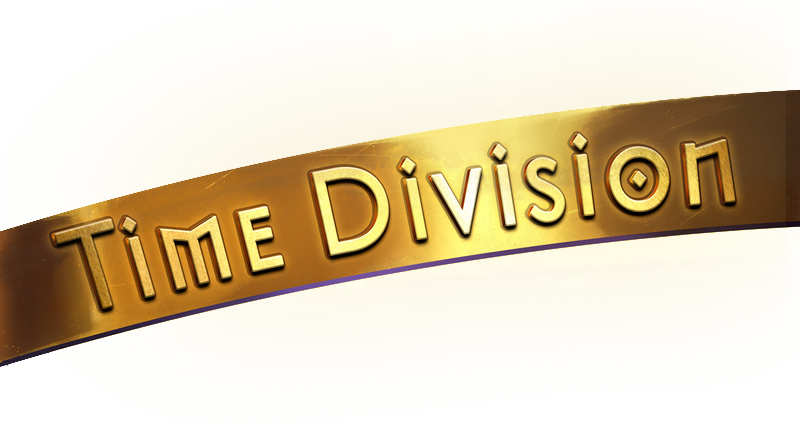
Sept. 23

